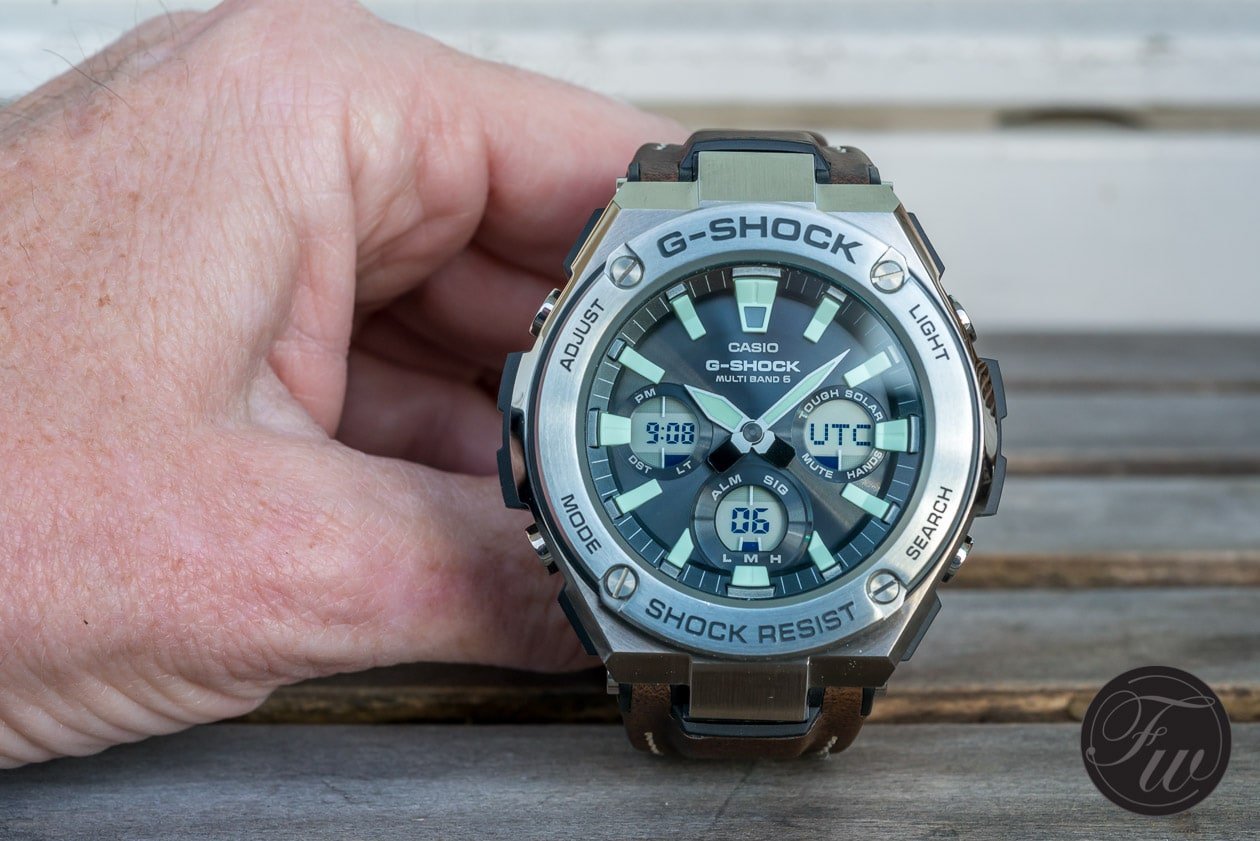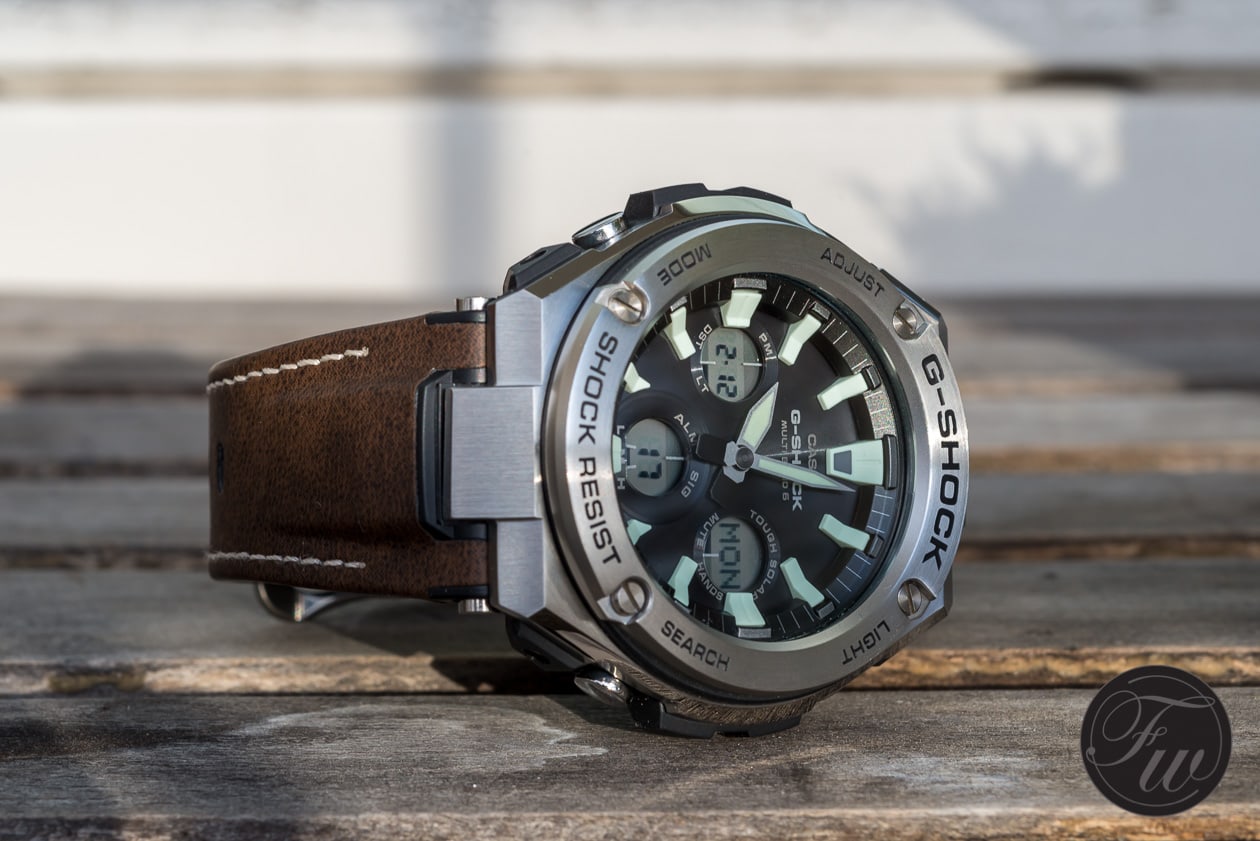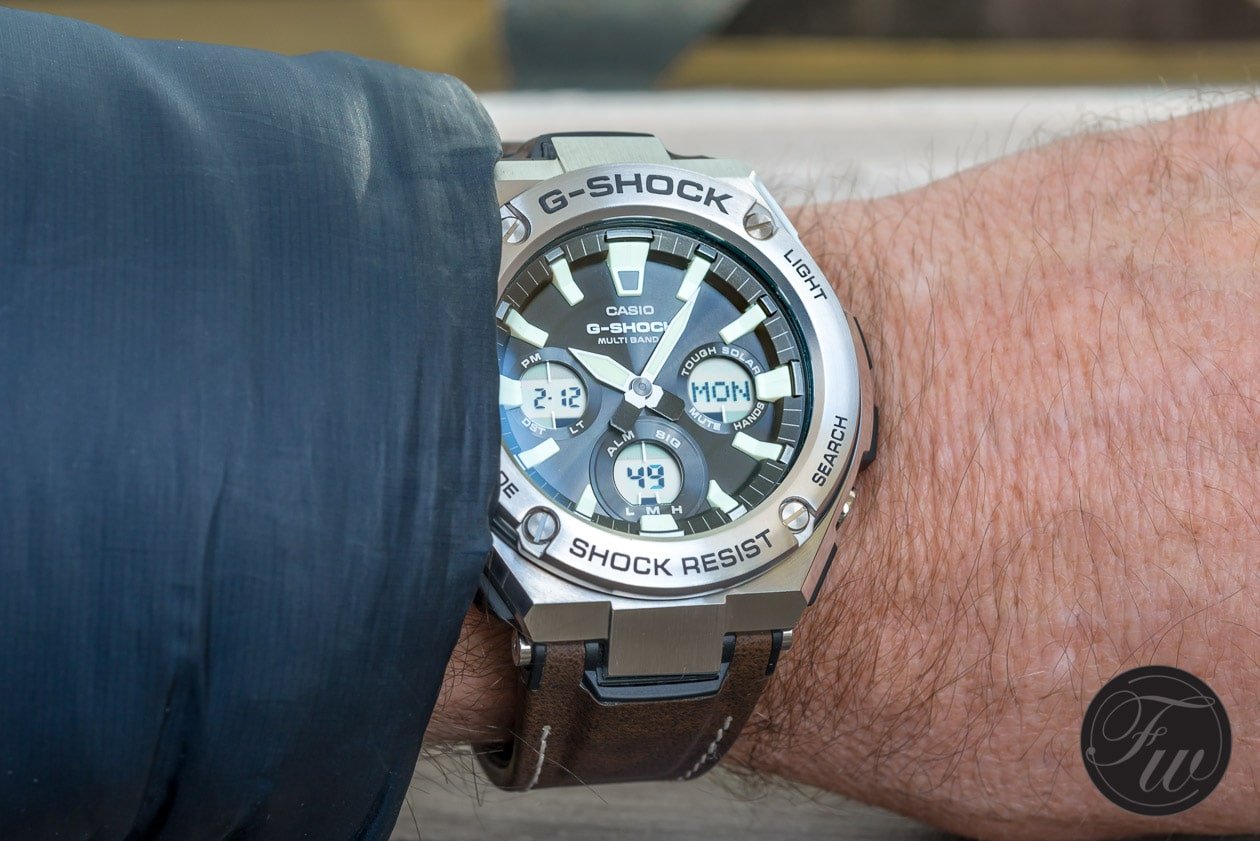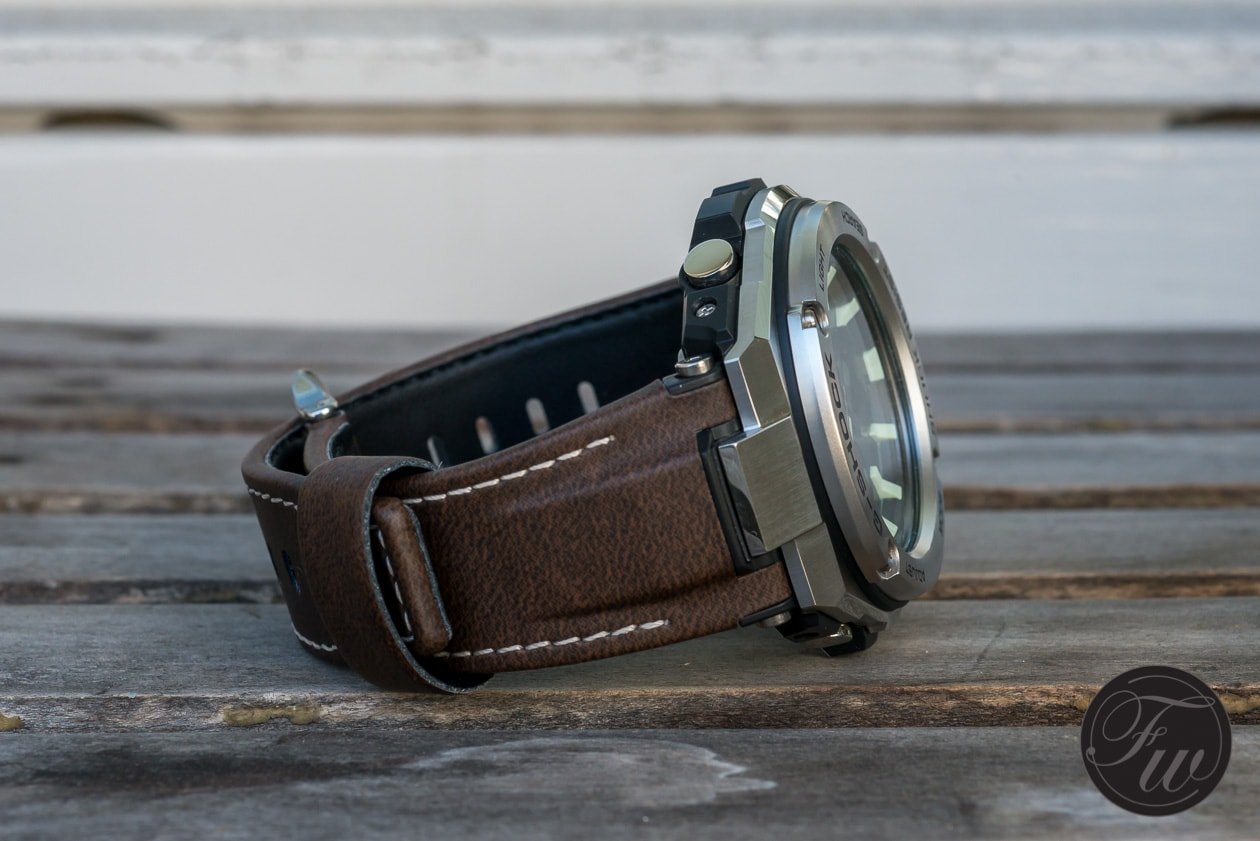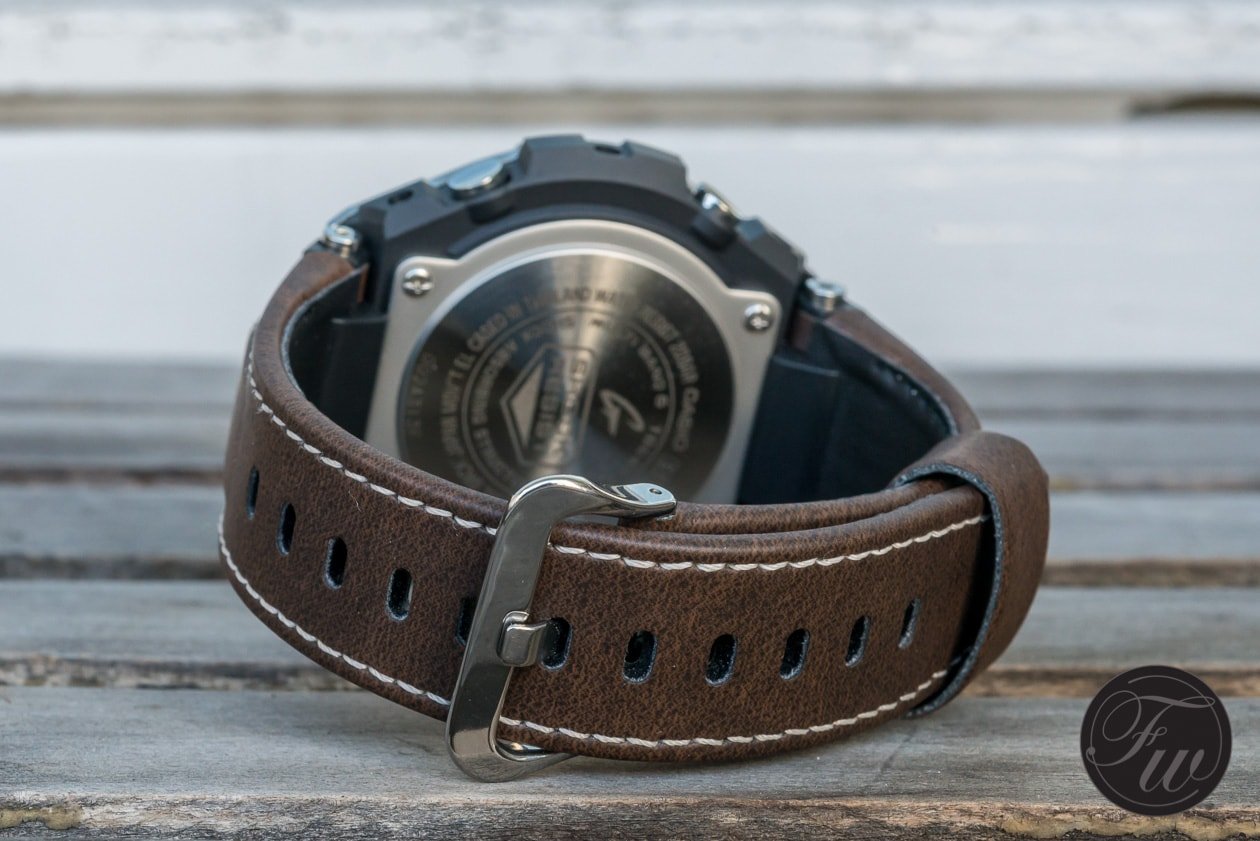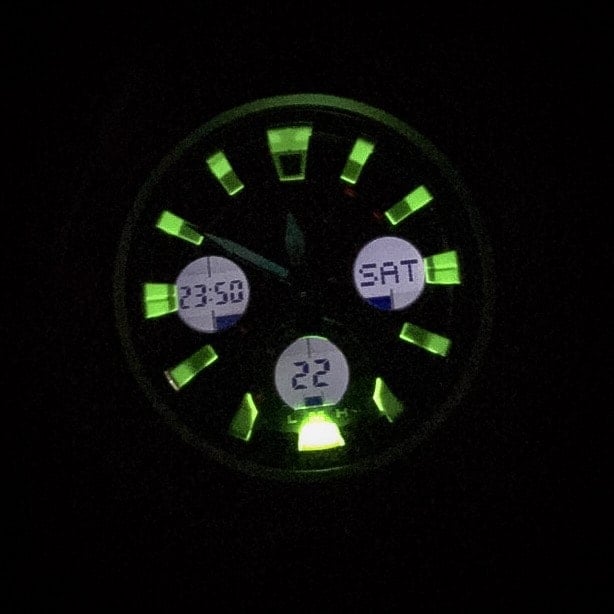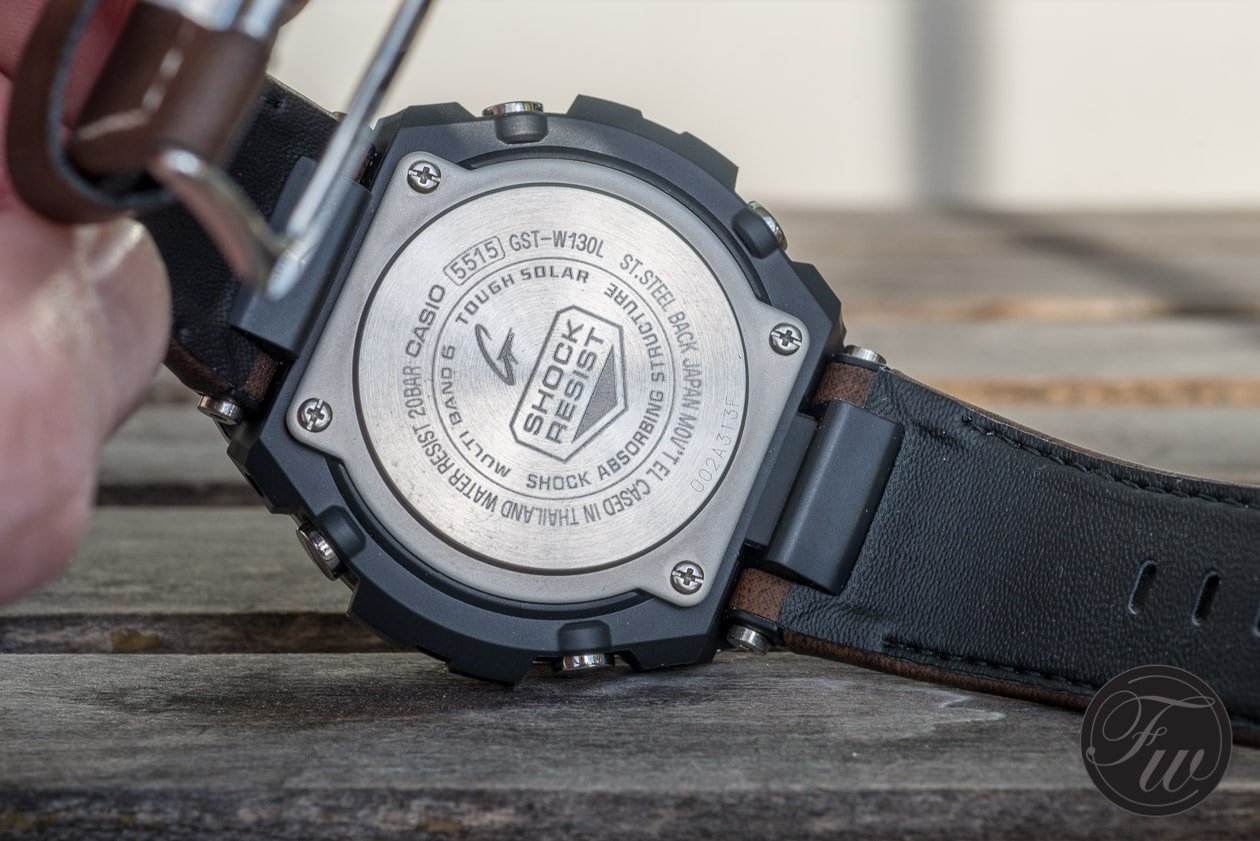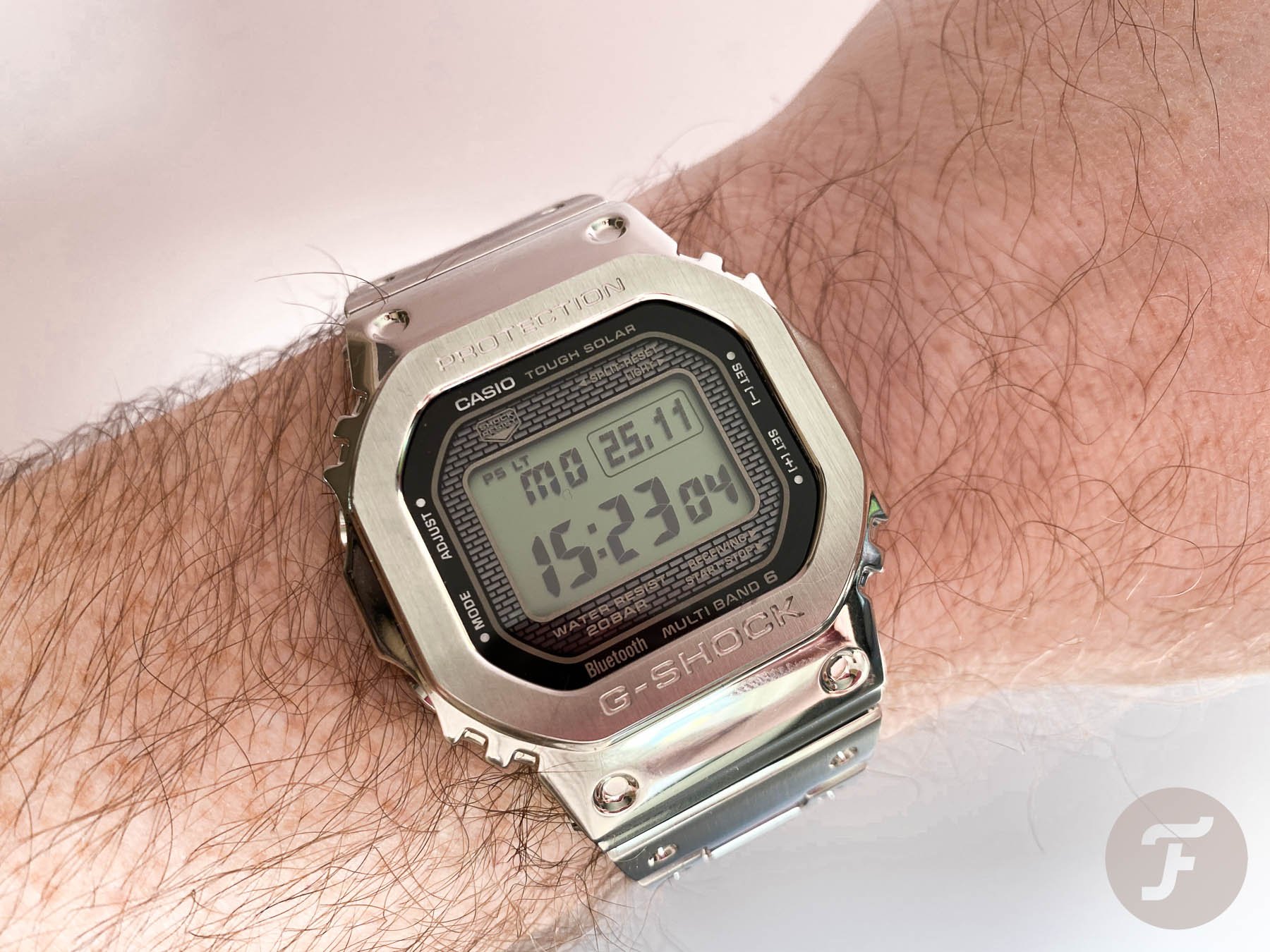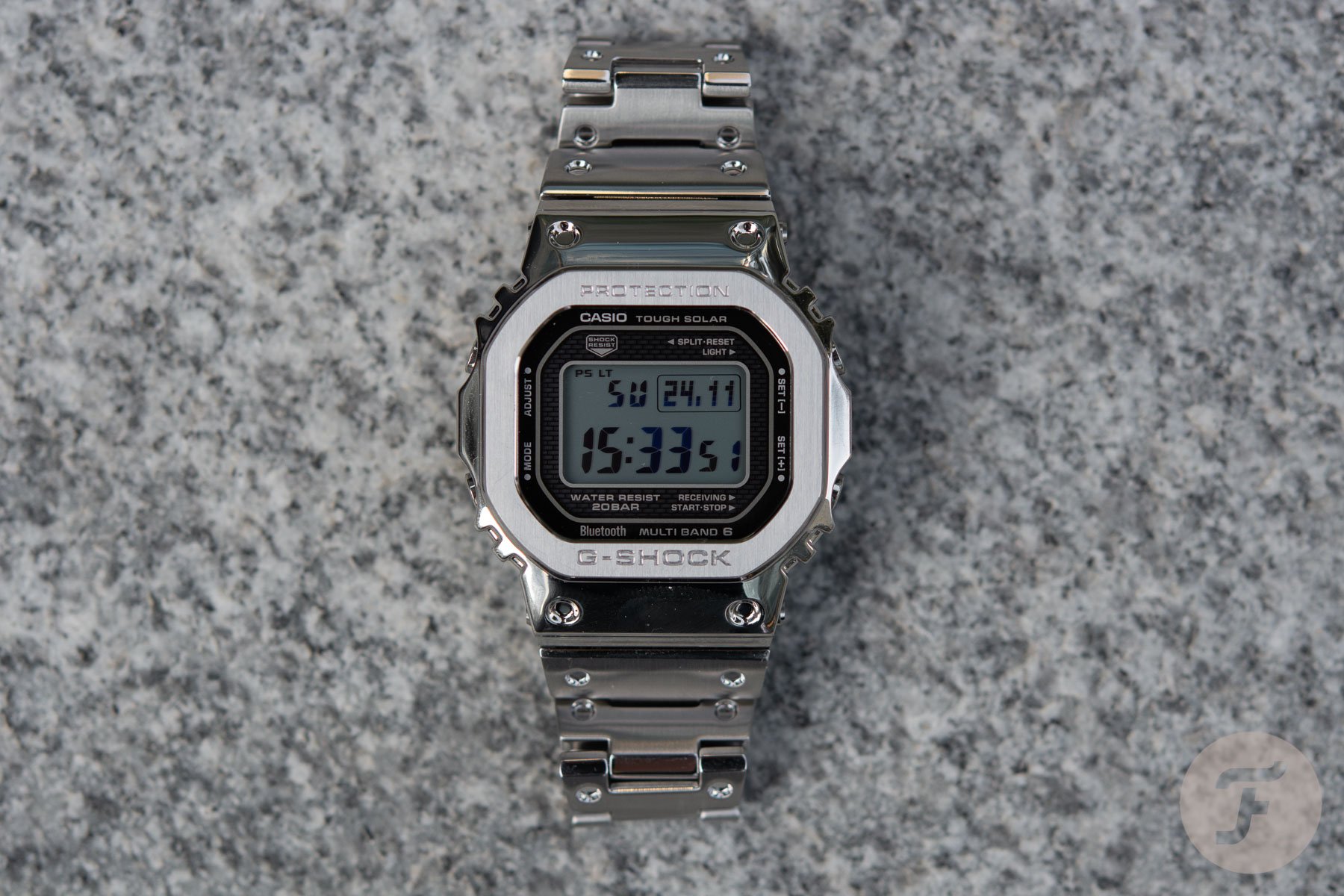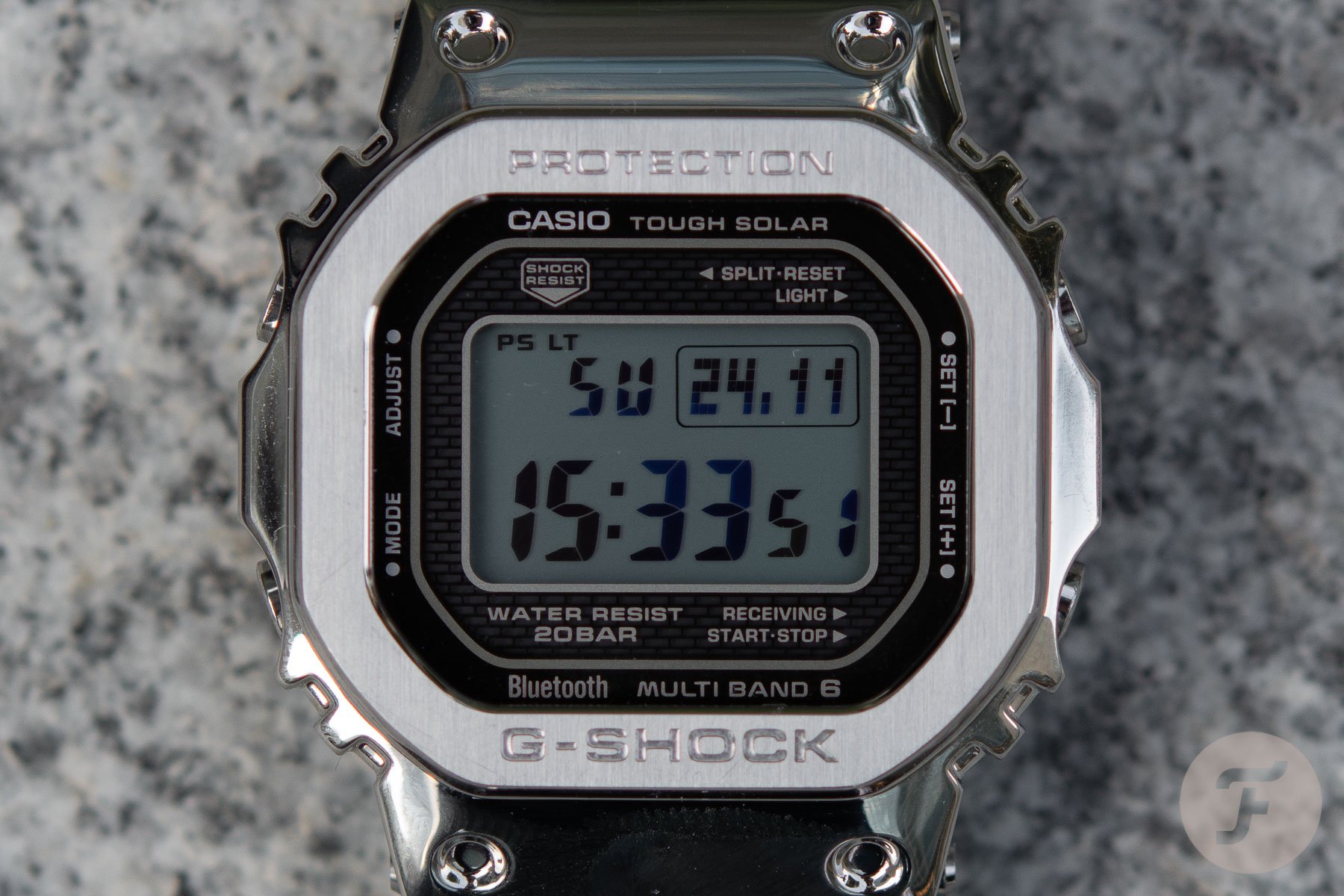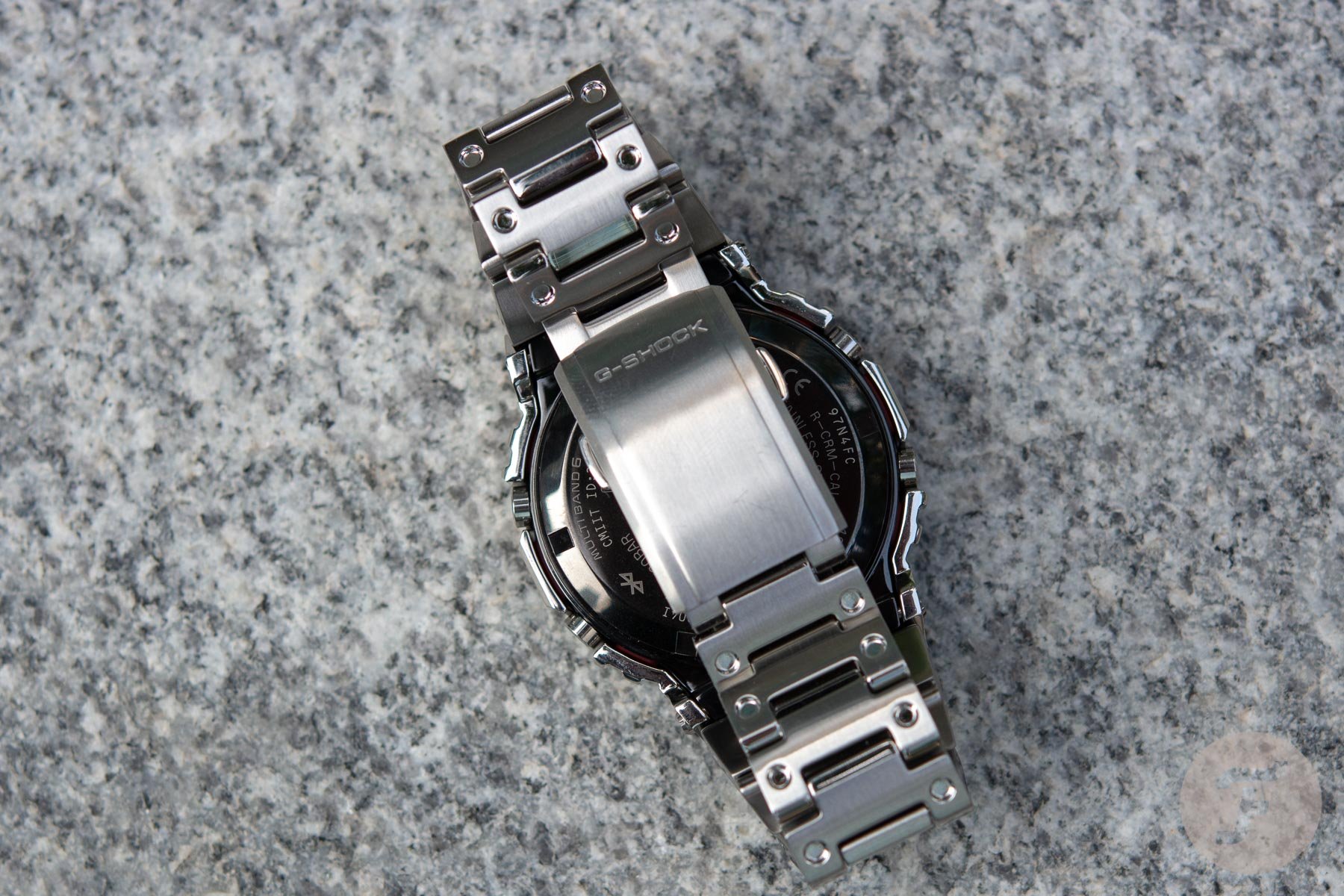Retrospective: The Casio G-Shock GW-5000, The G-Shock GST-W130L, And The G-Shock GMW-B5000D-1ER
As we ramp up to some new G-Shock news, coming to Fratello soon, we thought it would be nice to take a look back on a trio of great daily wears that we enjoyed (and still enjoy) wearing. Say hello (again) to the Casio G-Shock GW-5000, the G-Shock GST-W130L, and the G-Shock GMW-B5000D-1ER
Back to basics. In 1983, designed and developed by Kikuo Ibe, Casio introduced the first watch according to their Tripple-10 concept. Waterproof to 10 bar, drop-proof to 10 meters, and 10 years battery life. The Casio G-Shock DW-5000C was born and could withstand a pressure of even 20 bar.
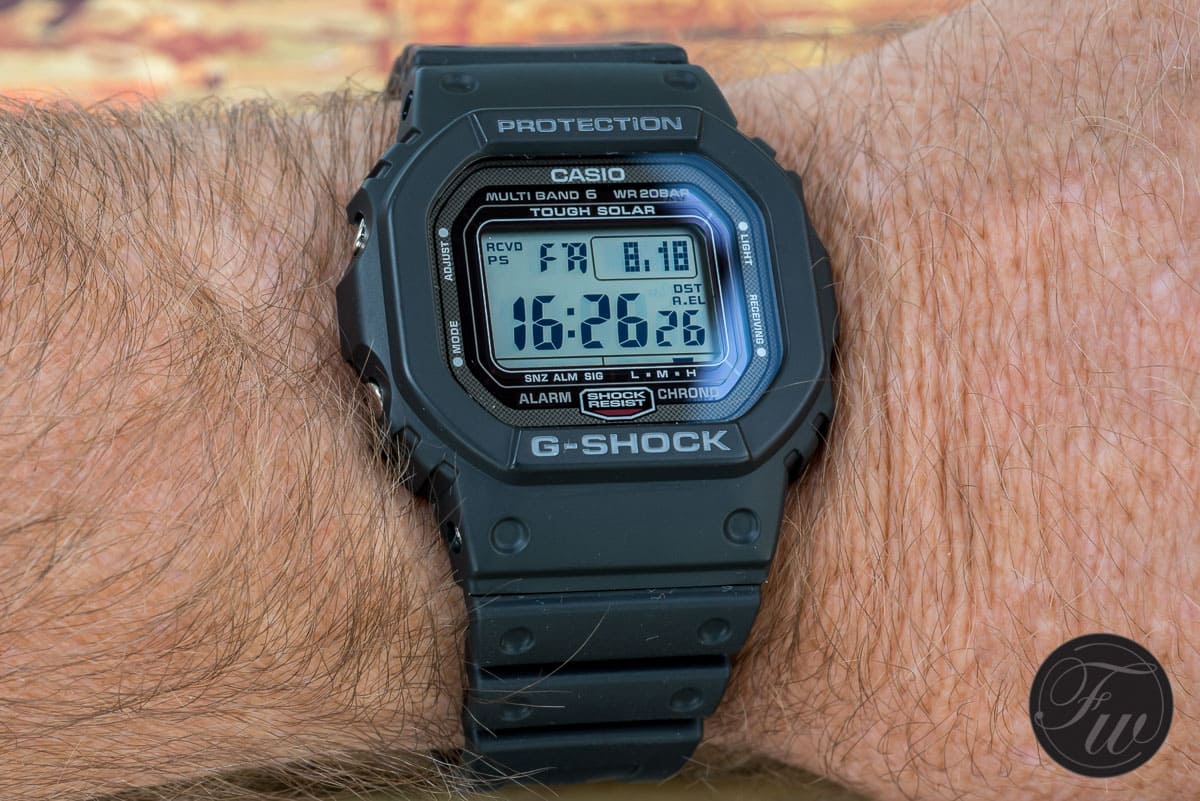
The illustrious GW-5000 on my wrist
Casio G-Shock GW-5000
After the introduction of the G-Shock DW-5000C, the model was slightly changed with a different module and dial in 1987. The type indication became DW-5600C. The G-Shock still had a solid metal inner casing which was placed in a plastic outer case with much space to damp eventual shocks towards the movement. Then in 1996, Casio changed the construction of the G-Shock to become an all-plastic casing with just a metal case back. The DW-5600E saw the light, now more than 20 years ago.
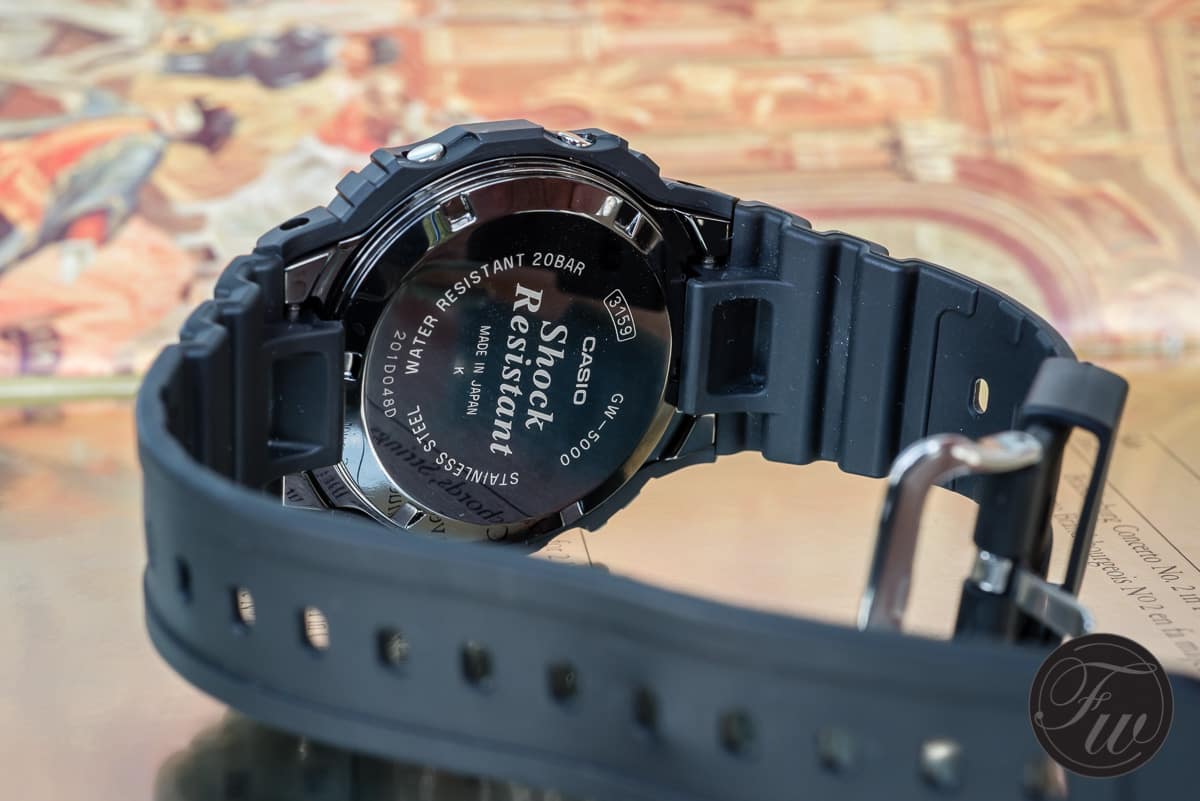
The screw down case back in DLC’d stainless steel of the GW-5000
A bargain for a historical significant watch
This very G-Shock DW-5600E model is still available today. I know of at least two different colour executions. One with white printing, a clear display background and steel coloured pushers (ref DW-5600E-1VC). And one with with gold-like printing, a gold coloured display background and gold coloured pushers (ref DW-5600EG-9VQ). I think the first model is mainly aimed at European customers and the US, while the second is seen more often in Asia.
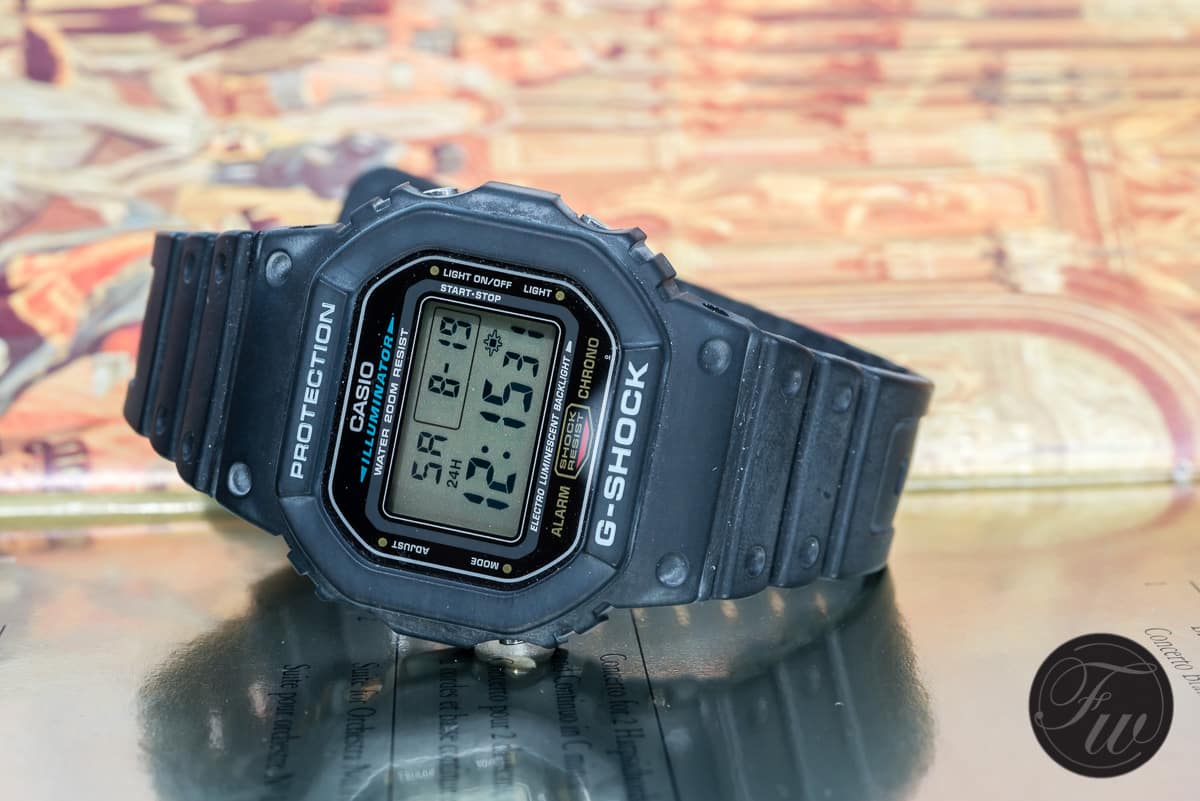
The most basic version of a square G-Shock, the DW-5600E-1VC
These DW-5600E watches can nowadays be bought for less than € 80,=. I think this could very well be the best bargain around for a watch which will last forever and has a significant place in history.
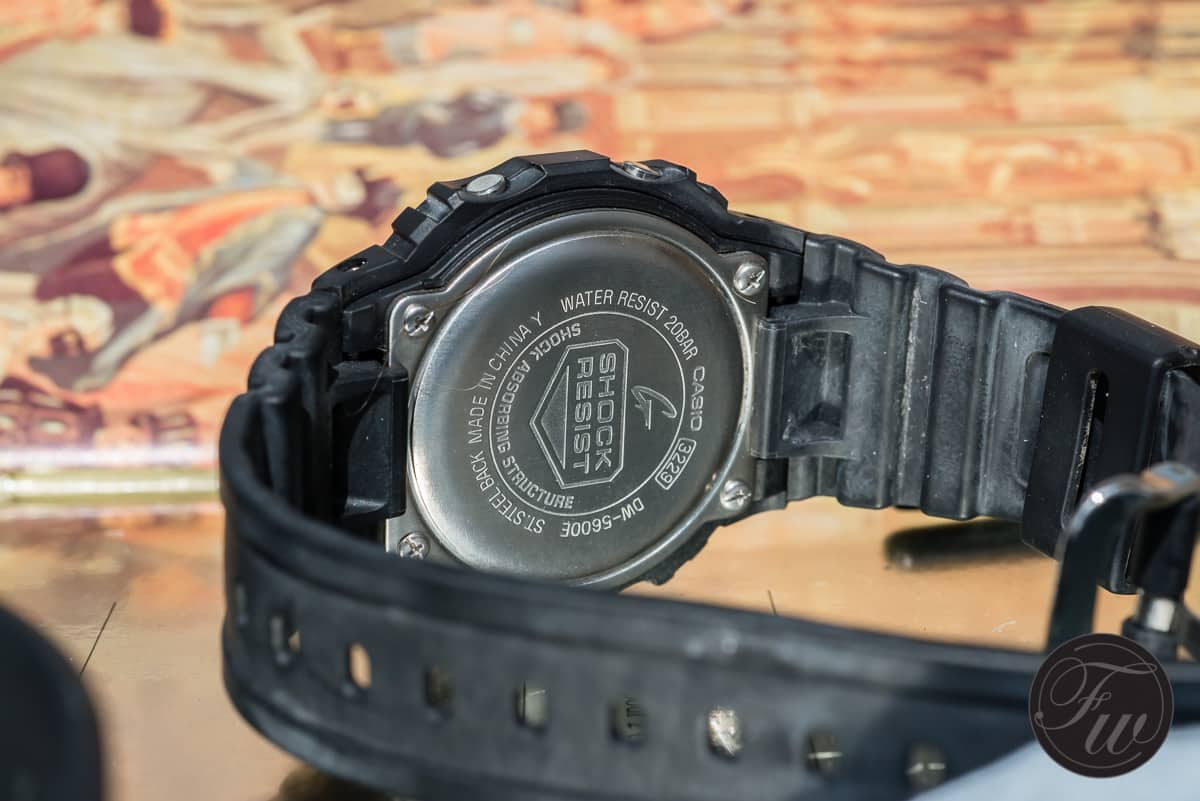
Case back of the DW-5600E
Physical development of the G-Shock Squares
But. But this doesn’t mean that Casio didn’t develop the as ‘Square’ nicked G-Shock any further. Besides all different – round, analog, multi-sensor, and even more multi-function – models which came to the G-Shock series, Casio of course developed the original Square models up to today’s standards and technology as well.
The Square models were updated in two ways. On one hand models with a solid steel inner-casing were introduced again, while using the same – more or less simple – movement modules. This means no solar-powered energy supply and no radio-controlled time accuracy. However, it means a watch that feels much more solid and sturdy. Interesting examples of this are for instance the in 2003 and 2013 introduced 20th- and 30th-anniversary models DW-5000SP and DW-5030C.
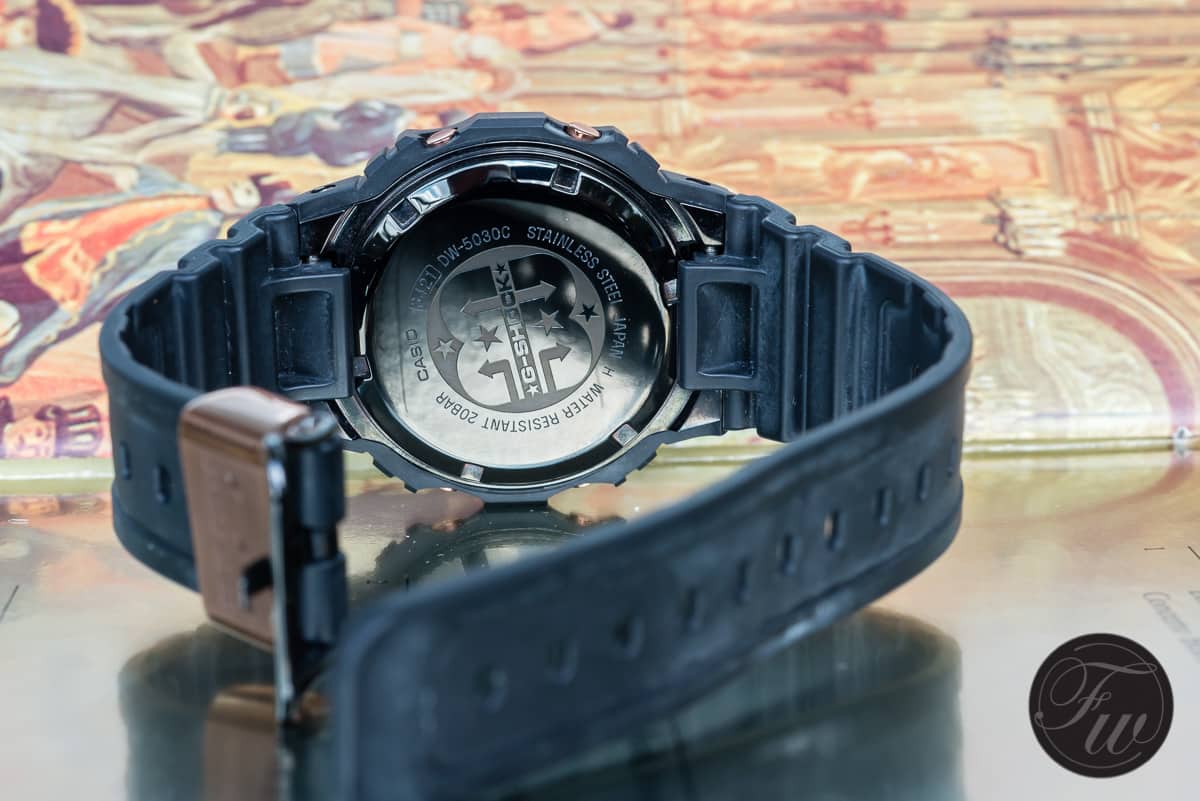
The solid metal inner casing with a screw-down case back in stainless steel of the DW-5030C
Movement technical and functional updates
On the other hand, models with more sophisticated movement modules with, for instance, a solar-powered energy supply and radio-controlled time accuracy were introduced as well. However still with plastic inner casings. The GW-M5610 is a good example (still available and around €130). This might as well be the current model with optically most resemblance to the original 1983 DW-5000C.
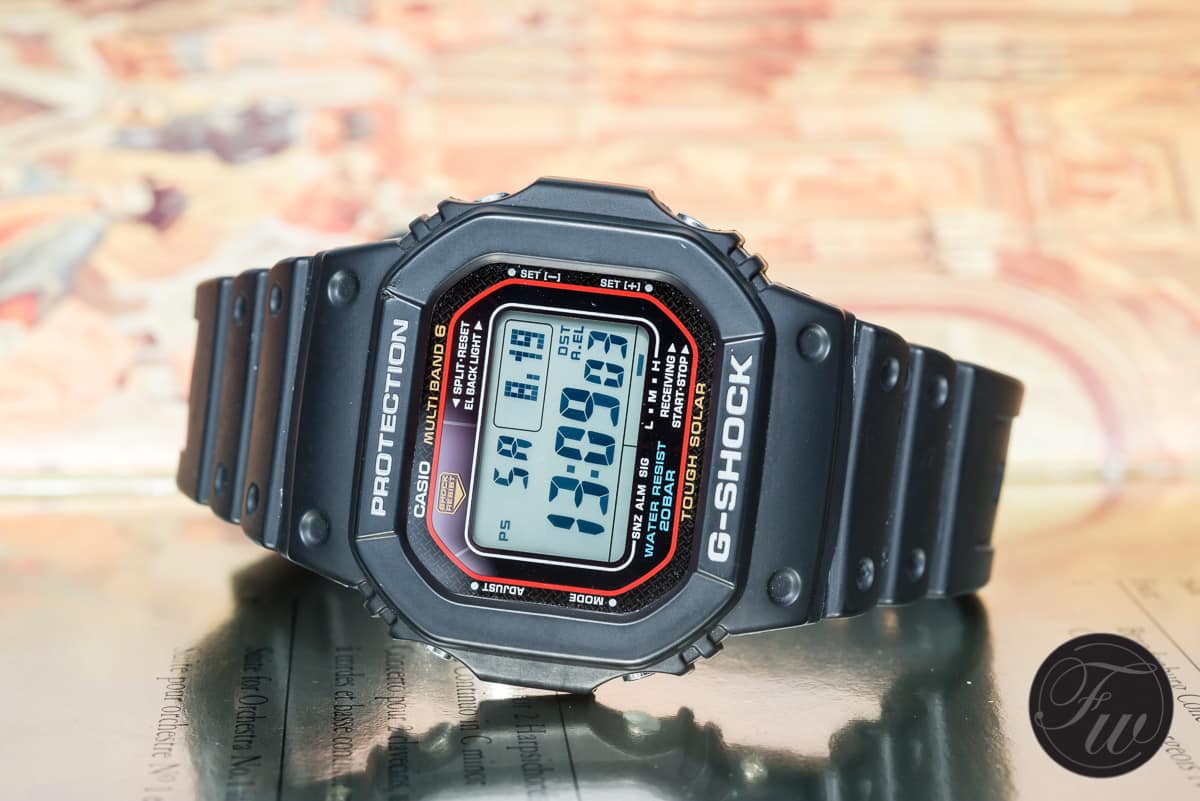
The G-Shock GW-M5610 looks very much like the first G-Shock from 1983
Many different variations have been supplied since. Including many special collaboration models. I’ve seen Square models with solar power without multi-band (as far as I know no multi-band models exist without solar power), models with tidal information, even models with a blue tooth connection to your smartphone. These watches are so far off the original 1983 DW-5000C that I won’t go further into them here.
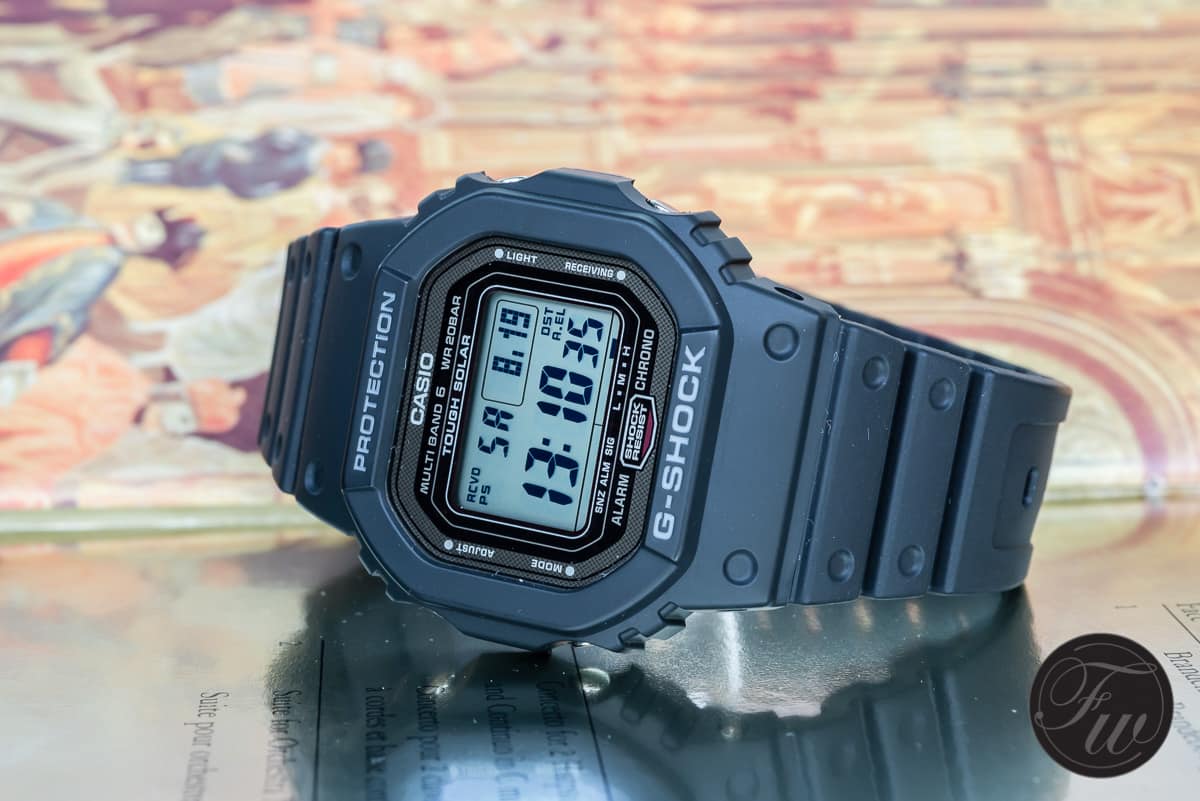
The most historically significant G-Shock in today’s G-Shock collection, the GW-5000
The best appreciation of G-Shock and its history
However! Then there’s the GW-5000. The GW-5000 today is the most historically significant G-Shock in today’s G-Shock collection. It descends directly from the original G-Shock from 1983. This means a solid metal inner casing with a screw-down case back in stainless steel with a black DLC coating. Its look is intentionally basic and its features are not the most advanced available. However, it is a prestige G-Shock. It has a nicer overall finish than any other Square model and uses a softer and more comfortable polyurethane strap.
The downside is that the GW-5000 is exclusively made and sold in Japan, which partly accounts for its relatively high price (around €365). Only the most observant and knowledgeable G-Shock enthusiasts will recognize this watch. It won’t get you instant status with the general public. Owning the GW-5000 however is one of the best ways to express your appreciation of G-Shock and its history.
Last but not least a special G-Shock, the GW-S5600
There’s one quite special Square G-Shock model which I do want to mention here. It’s the GW-S5600. Although sporting the same solar-powered and multi-band regulated module as the GW-5000, the GW-S5600 has no solid metal inner casing.
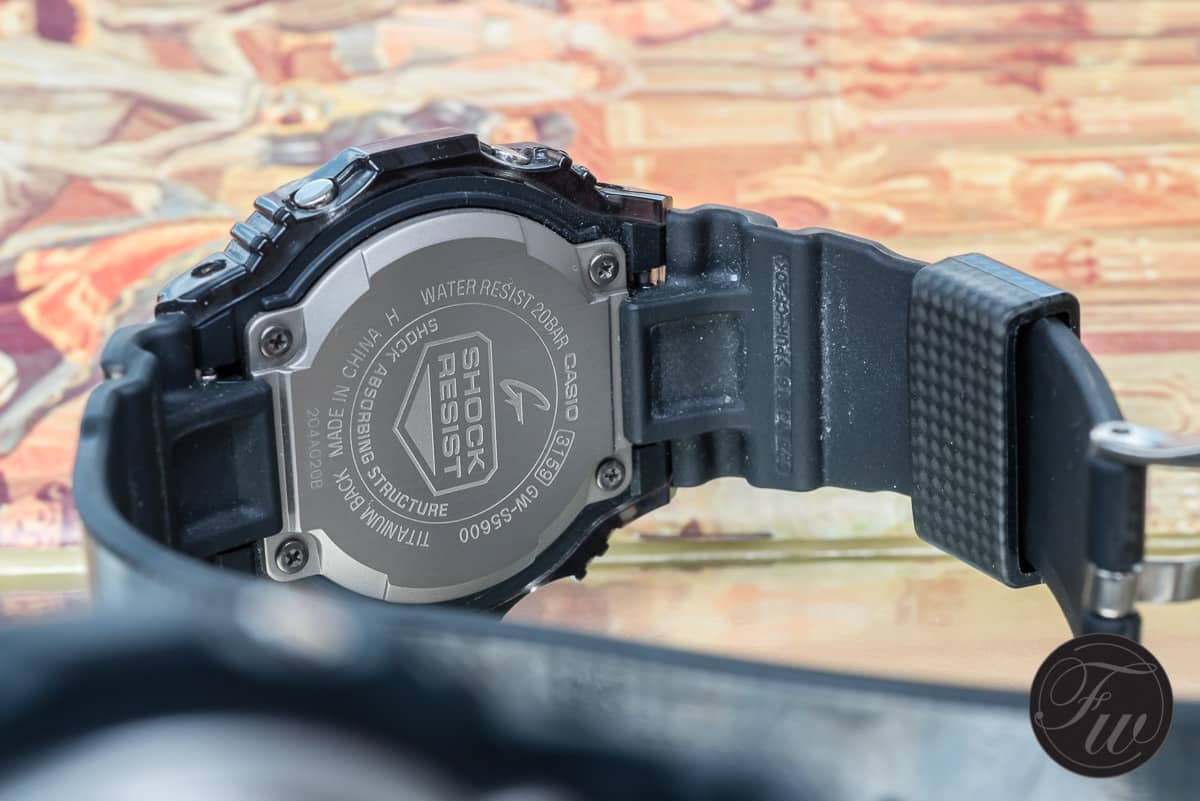
The titanium case back of the GW-S5600 which has a carbon-reinforced strap
However, Casio chose to use quite exotic materials to have this watch stand out and to give it specific qualities. Special for this model are the carbon-reinforced strap and slightly transparent black casing. The strap probably being a reaction from Casio to ever more often heard rumors that the standard straps are known for easy breaking. And secondly, probably to keep the weight of the watch as low as possible and to give it a more sophisticated feel when wearing, its case back is made of titanium. Unfortunately, this model as well is available for the Japanese market only where it sets you back €290.
Casio G-Shock GST-W130L
Hence, what ís so totally different about these watches? I wouldn’t say that the movement Casio uses here, their caliber (Casio uses the term ‘module’) 5515, isn’t high-end. In a totally different way, however. It’s probably not beautifully decorated and finished, but it’s extremely functional. Solar-powered, and multi-band time reception, for instance, are examples of specifications that we don’t find in every quartz movement.
Purpose Build
And of course, the purpose of the Casio G-Shock, or named G-Steel as well, GST-W130L is a totally different one than that of a Grand Seiko. The G-Steel GST is part of Casio’s G-Shock line. Watches made to last in hostile environments. Hostile in its broadest meaning, mainly hostile to a watch that is. Absolute toughness, ready for anything – except compromise. That’s what G-Shock is all about. I did a compact write-up on the history of the original G-Shock concept, and how it developed to the present day here.
Except for being used in hostile watch environments, G-Shock made it to the common everyday wrist as well. Even as a fashion statement one might say. Never renouncing its ancestry, however. How purposely fashionable a G-Shock might ever have been presented, it is able to withstand situations that one never wants to experience.
Urban Vintage
So that can be said of the GST-W130L as well. The G-Steel collection is one of the latest in Casio’s G-Shock line-up. Others, like the Master-of-G, MR-G or Baby-G have been around for a much longer period. The G-Steel GST-W130L to me has been clearly aimed at the (young) urban professional. Stylish material combinations and a vintage-inspired tough leather strap. Nothing to be ashamed of when worn in the office with a suit. Neither while hitting the skateboard pit or rushing down snowy slopes. When style meets function, Casio tend to say 🙂
Regular Functions
Time indication: hour and minutes (analog, and digital upon request replacing the date) and digital seconds. Calendar: day, month (digital) and date (abbreviated) indication(*). These basic features are all present in one glance. Pushing the ‘Mode’ button repeatedly shows the following additional functions one by one, in the upper two digital windows. Word Time (including UTC as seen in one of my pictures), Stopwatch, Timer, and Alarm. Nothing spectacular or unexpected here.
 Personalized Settings
Personalized Settings
What I like very much is that many of the functions of the Casio module 5515 can be personalized. I’ll mention a few, but probably all. The tones for using the pushers can be turned on or off while keeping the tones for alarms and timer active. The hourly beep signal can be turned on or off. The backlight can, or can’t, be automatically operated by a twist of the wrist. Daylight saving time can be automatically, or manually, adjusted (why would you do that manually?). And the digital time indication can be chosen for in 12- (with the indication of am and pm) or in 24-hour format.
(*) What can not be changed – and I have never seen one Casio which could – is the order in which the date and month are digitally indicated. So today is 2-11. Which is not the 2nd of November, however February 11th. Why not providing users a possibility to change this? It could even be done together with the change of 12- and 24-hour format of the time.
Some Strange Things
Although overall very positive, I mentioned some strange things about the Casio G-Steel GST-W130L as well. That starts with strapping the watch on your wrist. The tough-leather (vintage leather stitched to soft rubber inner lining) strap is long enough for a large wrist. However, there’s just one keeper to hold the length of the strap which is not used. Normally there’s one keeper directly after the buckle, and a separate one to keep the rest of the strap.
The backlight is beautiful. Lighting up the whole dial and 3-D index markers, as well as the digital displays. However not the hands. those are hardly lit by the backlight, and in fact only show up slightly when the light has dimmed again. It just looks a bit weird, however, there has not been a situation in which I wasn’t able to determine the time. So it’s not that bad as well.
Move Out Of The Way
A last neat feature I want to mention is the ability to move the hands out of the way. With a push of a button, hands are moving and permit a free visibility of functions in the little round digital displays, like stopwatch or date.
Specifications and Pricing
And then I’ll end here with the technical specifications and the price of the Casio G-Steel GST-W130L. Although the maximum width of the stainless steel and resin casing may just exceed 50mm, the bezel diameter is 44mm. And that’s the feeling the watch gives as well as being worn. A rather, but not overly large watch which wears comfortable. The price in Europe currently is €299 (including VAT), which in my opinion is a bargain.
I am a kid of the 1980s, and although I had some watches before, the first watches I bought myself (being a kid) was a digital Casio W-14 in 1986 or so.
I was aware of the larger G-Shock models, but I was a small kid, and it looked ridiculous on my wrist. But, I was thrilled with this W-14, and I still have it today in running condition. I had to perform surgery on the watch not too long ago and used a donor W-14 to swap the movement and put some fresh batteries inside. And a new strap, as the original strap was already replaced once, and the second strap deteriorated entirely in 2018.
Anyway, after the first Casio, many followed, including a G-Shock DW-5000SP, which was a limited run in 2003 celebrating the 20th anniversary of the G-Shock. It had a steel case back and came with a similar ‘dial’ as the original 1983 G-Shock. When G-Shock was celebrating its 30th anniversary a few years ago with some red models, I bought one of those too. However, I must admit I rarely wear them. Unlike Gerard or Bert in our team, who do give their G-Shock collection a bit of wrist time, mine hardly get to see sunlight. And because of that reason, I stopped adding more G-Shock models to my modest watch collection.
G-Shock GMW-B5000D-1ER
That changed when I noticed two new G-Shock references, the GMW-B5000D-1ER and the GMW-B5000TFG9-CR. The latter came in gold color, using a treatment similar to the well-known PVD coating. Unfortunately, that one sold out quickly, and the prices asked for those on eBay are beyond fun. Meanwhile, G-Shock came with a similar gold version, having an inverted display. But my experience with those displays is that they are far more challenging to read. So, I went for the stainless model, the G-Shock GMW-B5000D-1ER. The retail price of this G-Shock is €499 (including VAT), and that’s probably immediately the most expensive G-Shock in my collection. Given the fact it is a stainless steel watch justifies the mark-up for this model, in my opinion, so I ordered it.
I am not a sucker for specific functionality (I realized that when I bought a G-Shock Mudman at some point, with all sorts of functions I have never used). Still, the radio-controlled quartz movement comes in handy for a very accurate time indication. I was also curious about the Bluetooth function, so you can configure and correct the watch using an app on your smartphone. Just like on my mechanical chronographs, I rarely use that to time events (or at least no sensible events). Some times I use a chronograph to record my travel time or in the rare case when I am in the kitchen making food. When I was a kid, I remember I played with the chronograph (we just called it stopwatch at the time) and make the interval between a start and stop as short as possible. A stupid way to entertain yourself, but at the time, I found some of the classes in school even less entertaining, I guess. One of my other G-Shocks, I think it is the Mudman, has this feature that when you pick up the watch or move your wrist a bit, the backlight will switch on for a few seconds. The G-Shock GMW-B5000D-1ER has this as well, and although it might sound like a non-sense feature, I am happy this function can also be found on this watch. Reading time in low-light condition, especially in the winter where you get up in the dark and go home in the dark during weekdays, can be quite challenging and when the G-Shock automatically switches on the backlight, it saves you from using your other hand to push the ‘light’ button. Call me lazy, but I like it.
Why I Like The G-Shock GMW-B5000D-1ER
I already touched on some points about functionality that I like about the GMW-B5000D-1ER, but none of those are unique to this reference. As said, my Mudman has some similar features: multiband, auto-light, etc. I am pretty sure that the Bluetooth functionality also isn’t exclusive to this (and the gold) reference. I like all these features, but what I like best about my new G-Shock GMW-B5000D-1ER is the all stainless steel execution of what to me is the classic G-Shock design. I love the very first 1983 G-Shock DW-5000 model best, and I would even say it is an icon in the world of digital watches. This GMW-B5000D-1ER shares the same design values as that 1983 model. Next, the bracelet of this watch is pretty well done. Remember, we are talking about a watch below €500, but I am surprised to see what Casio’s G-Shock can deliver for that price tag. The bracelet is straightforward to resize yourself, using two small pins to push the spring-loaded pins inside a link and then gently remove the entire link from the next. It took me less than two minutes to resize this bracelet, without damaging any of the links. Then there’s a small micro-adjustment in the clasp like the old Rolex clasps had. Just use a toothpick to resize, and you’re good to go. The design of the bracelet is based on the black resin straps that came with the original G-Shock models and still do.
Setting time is also easy. I didn’t even take the manual out of the box, as my experience with digital Casio watches since 1986 was enough to get me through the menus of the watch. The functions per button are also on the dial, so anyone who has a bit of a feel for these things will manage. Most important is perhaps to set the time and correct time zone. By pressing the upper left button, labeled “Adjust”, you can have the watch pick up the exact time from the radio signals (in my case, this signal comes from a tower in Frankfurt). You keep the button pressed for a while (the screen also says ‘Hold’), and it will be all done automatically for you. With the pushers on the right side, you can go through the different timezones. I set mine to Paris (GMT+1). I fiddled around to get the watch to a 24-hour indication, and I also found a way to correct the time manually. If you encounter problems finding the proper settings, it is either time to get the manual out of the box, or – better yet – install the G-Shock app on your iPhone. After you’re done, you press the lower-left button (‘Mode’) for 3 seconds, and it will connect with the app on your phone. There, you can set and correct the time, set a different timezone, and program the alarm, timer, and reminder functions. Aside from the alarm, I am pretty sure I will never use those functions.
Will I Wear The GMW-B5000D-1ER?
I am convinced this watch will not replace any of my mechanical watches or digital Speedmasters (a vintage one and the X-33); those have a different meaning in my collection. I am also sure I will not wear it as much as my Apple Watch, which I happen to use when I play golf or use it as a second device once in a while (meaning I still wear a normal watch on my left wrist). But, unlike my black resin Casio watches – or even my Apple Watch, this stainless steel G-Shock GMW-B5000D-1ER has more body to it. It is a perfect watch to wear when I don’t want to risk losing or damaging my precious mechanical watches, go swimming (200 meters), visit places that are somewhat dangerous for wearing expensive things, etc.
The price of €499 might be a shocker (no pun intended) for those who are used to much lower prices for digital Casio watches, but I don’t feel it is overpriced for a watch with this built quality. I do wonder how long the app will be supported, for example. For a watch with this price tag, you do expect some longevity, of course. My experience with all sorts of ‘connected’ gadgets is that at some point, support stops, and you might risk you can’t use it anymore. That said, the Bluetooth standard is already longer in use than I expected it to be, so it might be the norm for years to come (and be supported). With regards to the stainless steel bracelet and case, I didn’t wear it long enough to see how it holds up against scratches and daily use over a more extended period. The high polished case (especially where the bracelet is attached) seems bound to show scratches (as it does with fingerprints), and I am curious to know what it will look like in six months from now, for example.

